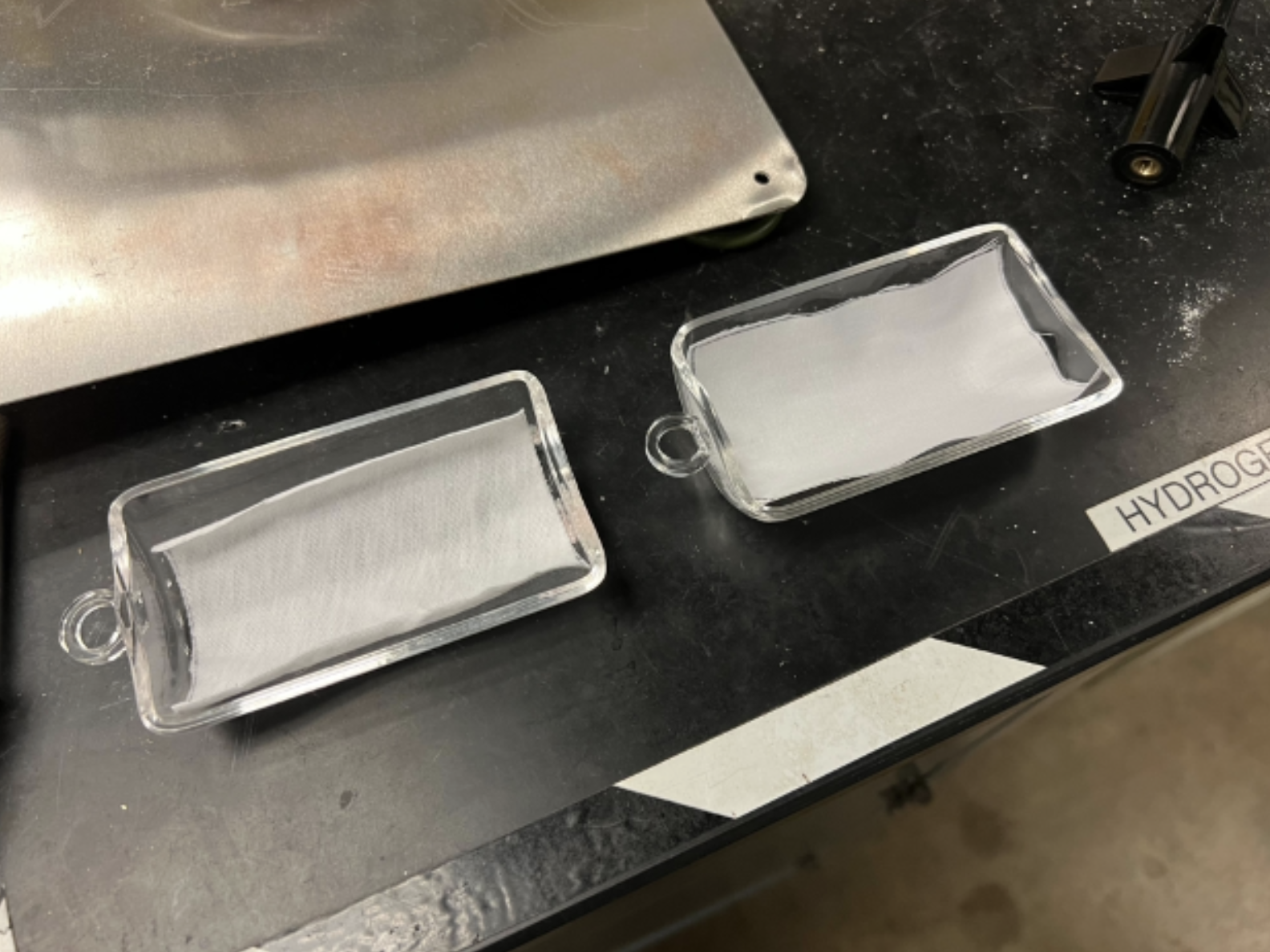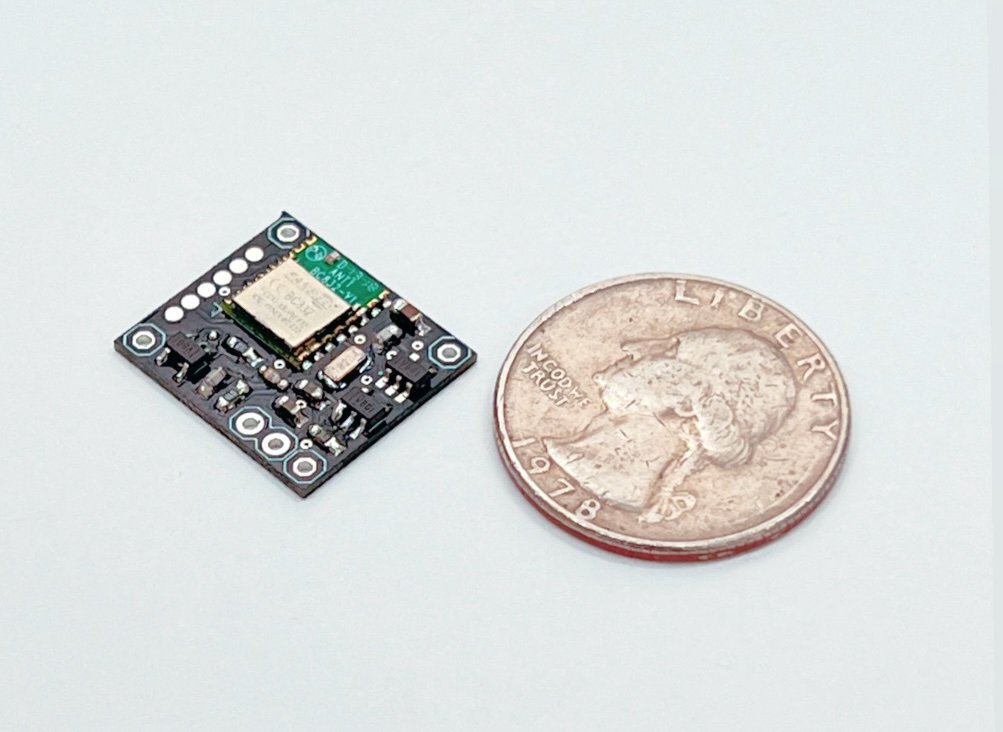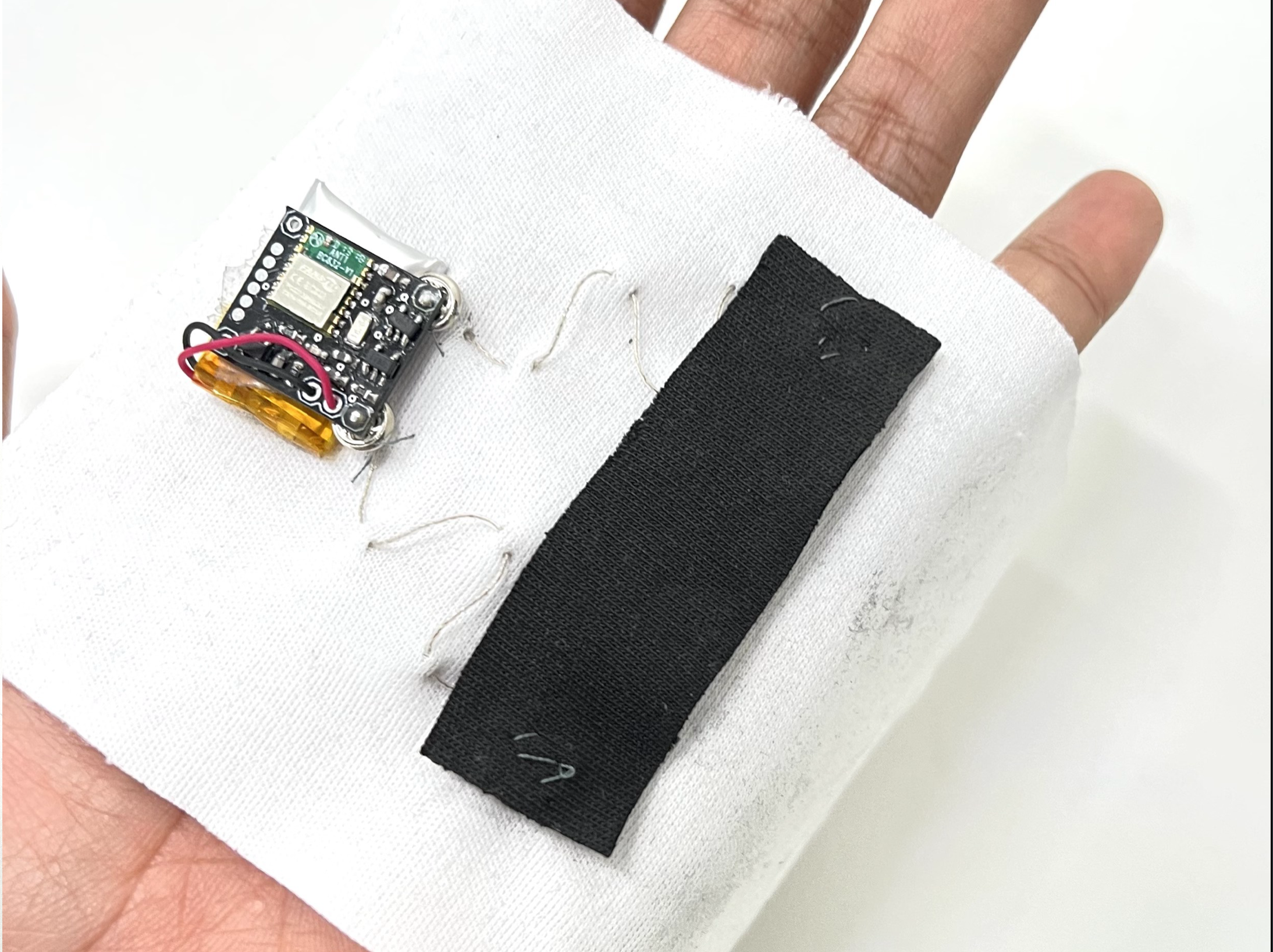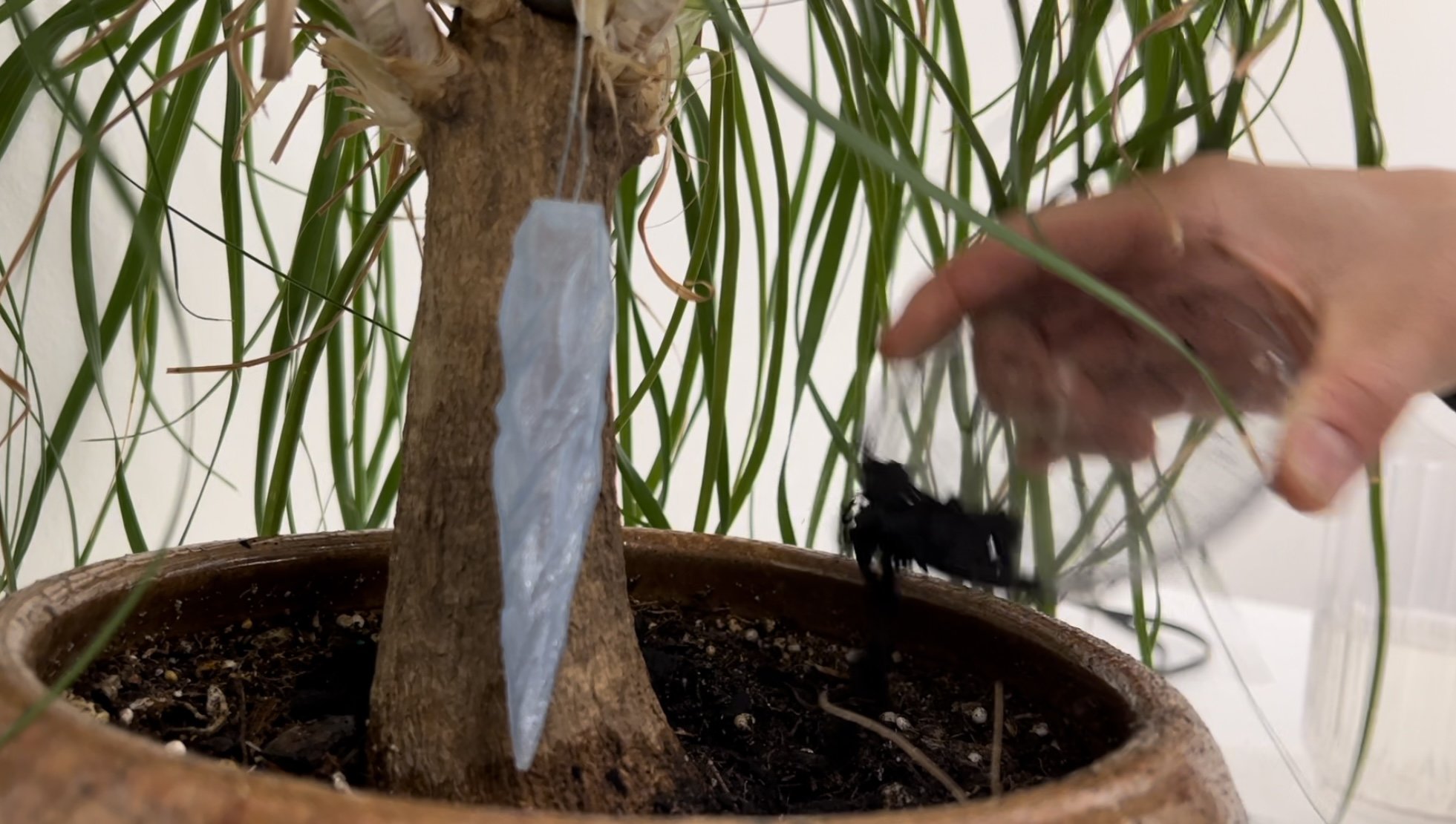Design and Fabrication of Multifunctional E-Textiles by Upcycling Waste Cotton Fabrics through Carbonization
The merging of electronic materials and textiles has triggered the proliferation of wearables and interactive surfaces in the ubiquitous computing era. However, this leads to e-textile waste that is difficult to recycle and decompose. Instead, we demonstrate an eco-design approach to upcycle waste cotton fabrics into functional textile elements through carbonization without the need for additional materials. We identify optimal parameters for the carbonization process and develop encapsulation techniques to improve the response, durability, and washability of the carbonized textiles. We then configure these e-textiles into various 'design primitives' including sensors, interconnects, and heating elements, and evaluate their electromechanical properties against commercially available e-textiles.
Using these primitives, we demonstrate several applications, including a haptic-transfer fabric, a joint-sensing wearable, and an intelligent sailcloth. Finally, we highlight how the sensors can be composted, re-carbonized and coated onto other fabrics, or repurposed into different sensors towards their end-of-life to promote a circular manufacturing process.
Publications Wicaksono, I., Maheshwari, A., Haddad, D.D., Paradiso, J., and Danielescu, A., 2024. Design and Fabrication of Multifunctional E-Textiles by Upcycling Waste Cotton Fabrics through Carbonization. In Proc. ACM Interactive, Mobile, Wearable, and Ubiquitous Technologies (IMWUT) 8, 2, Article 45 (June 2024), 31 pages.















